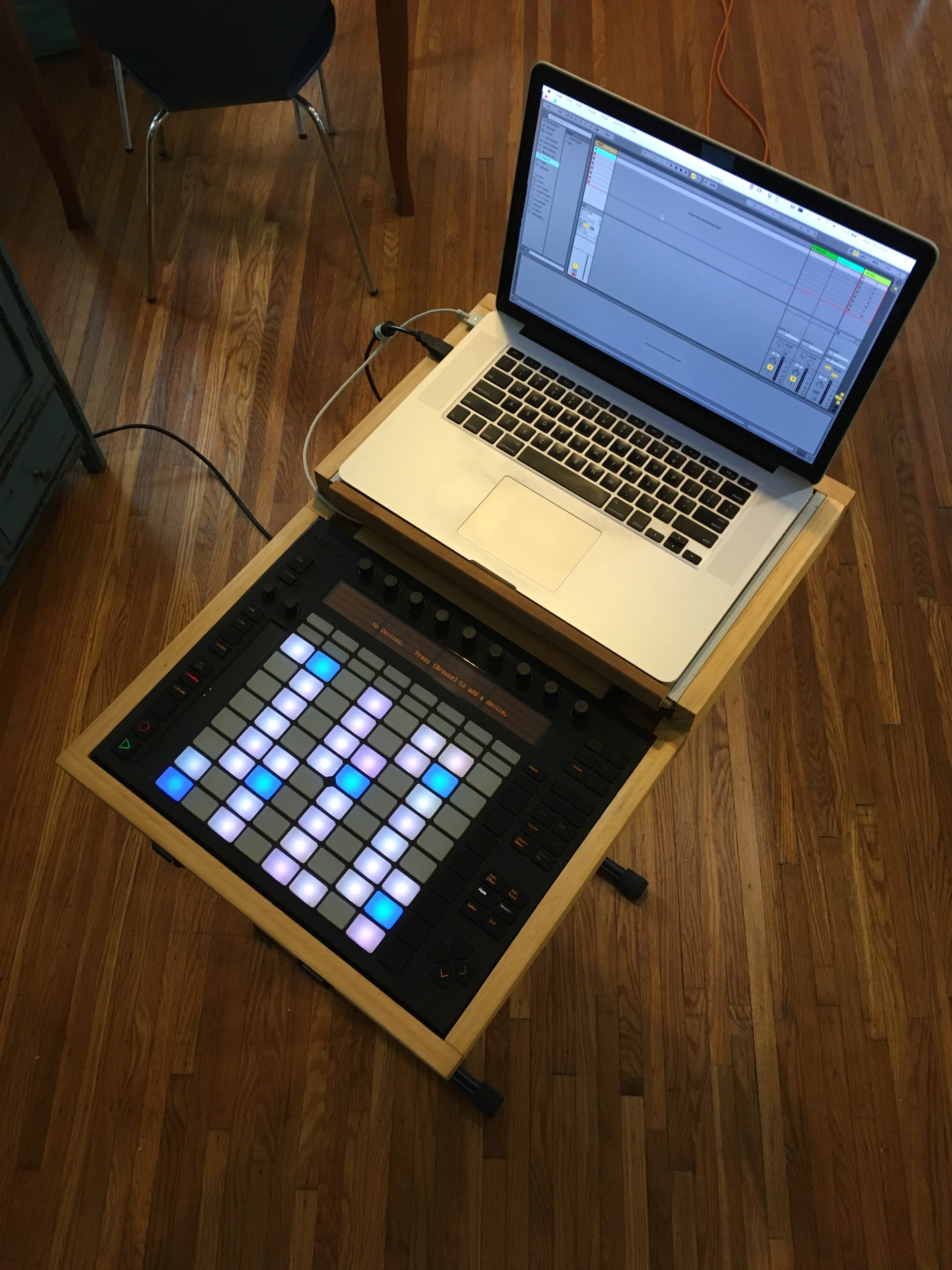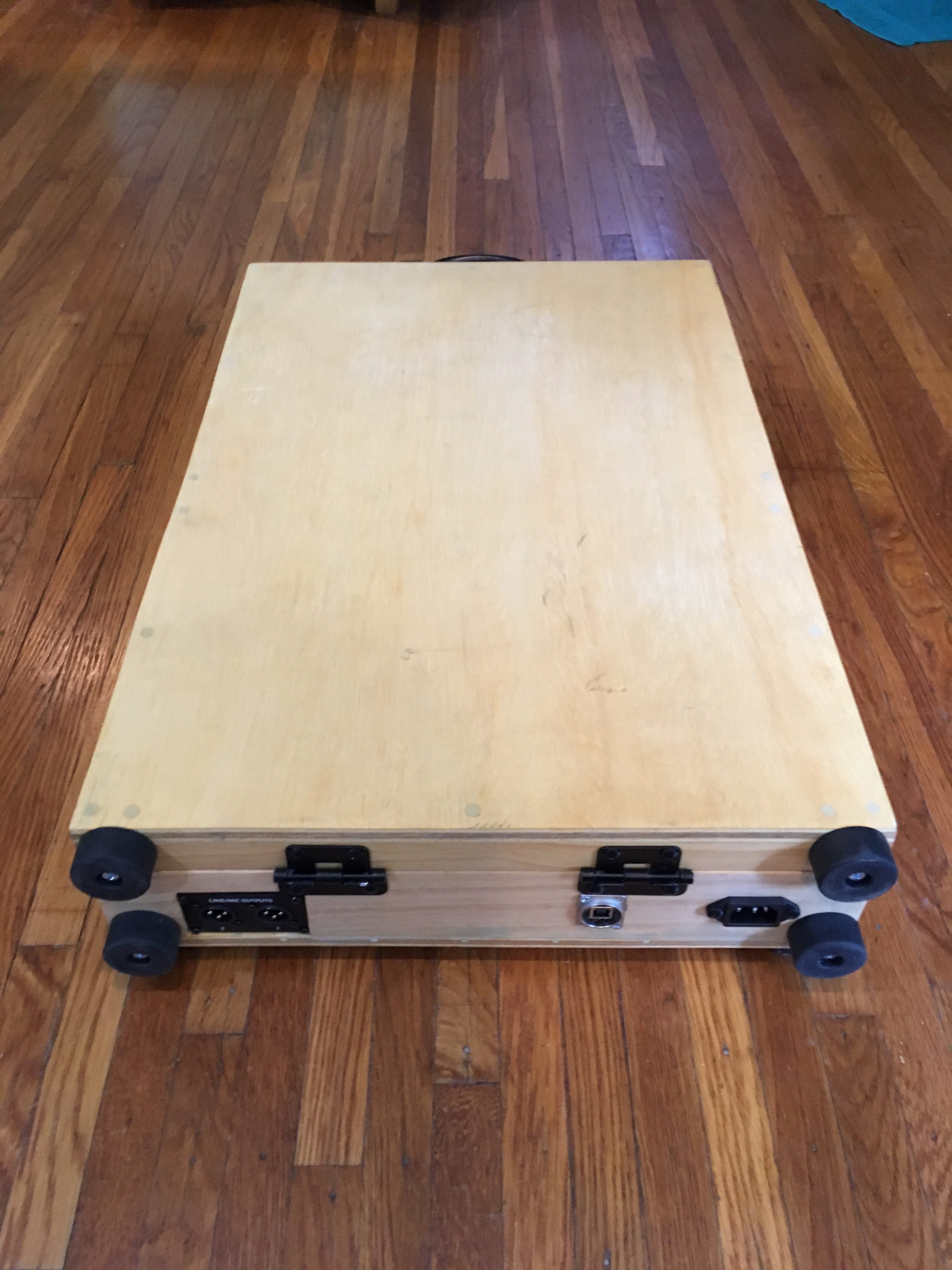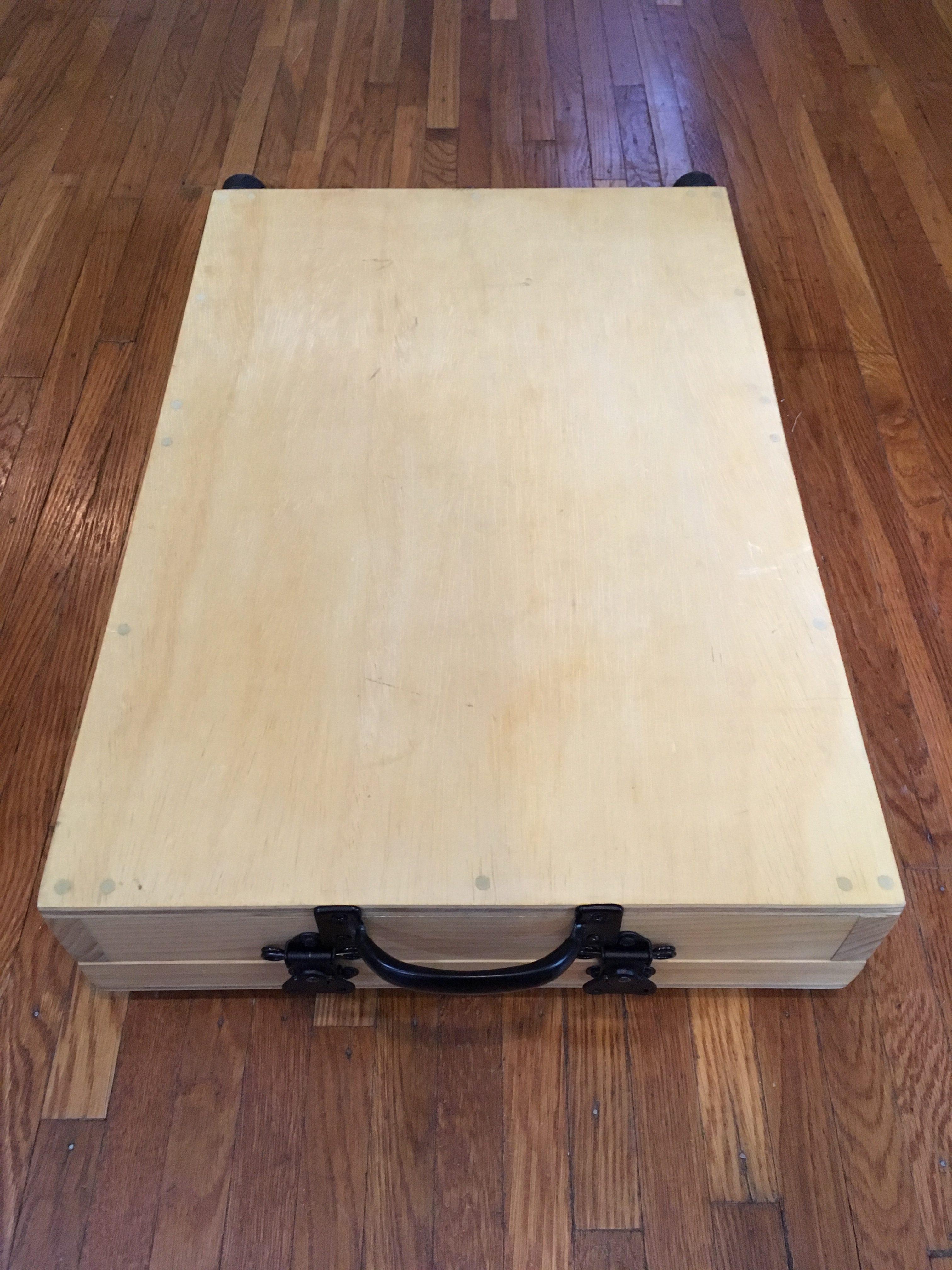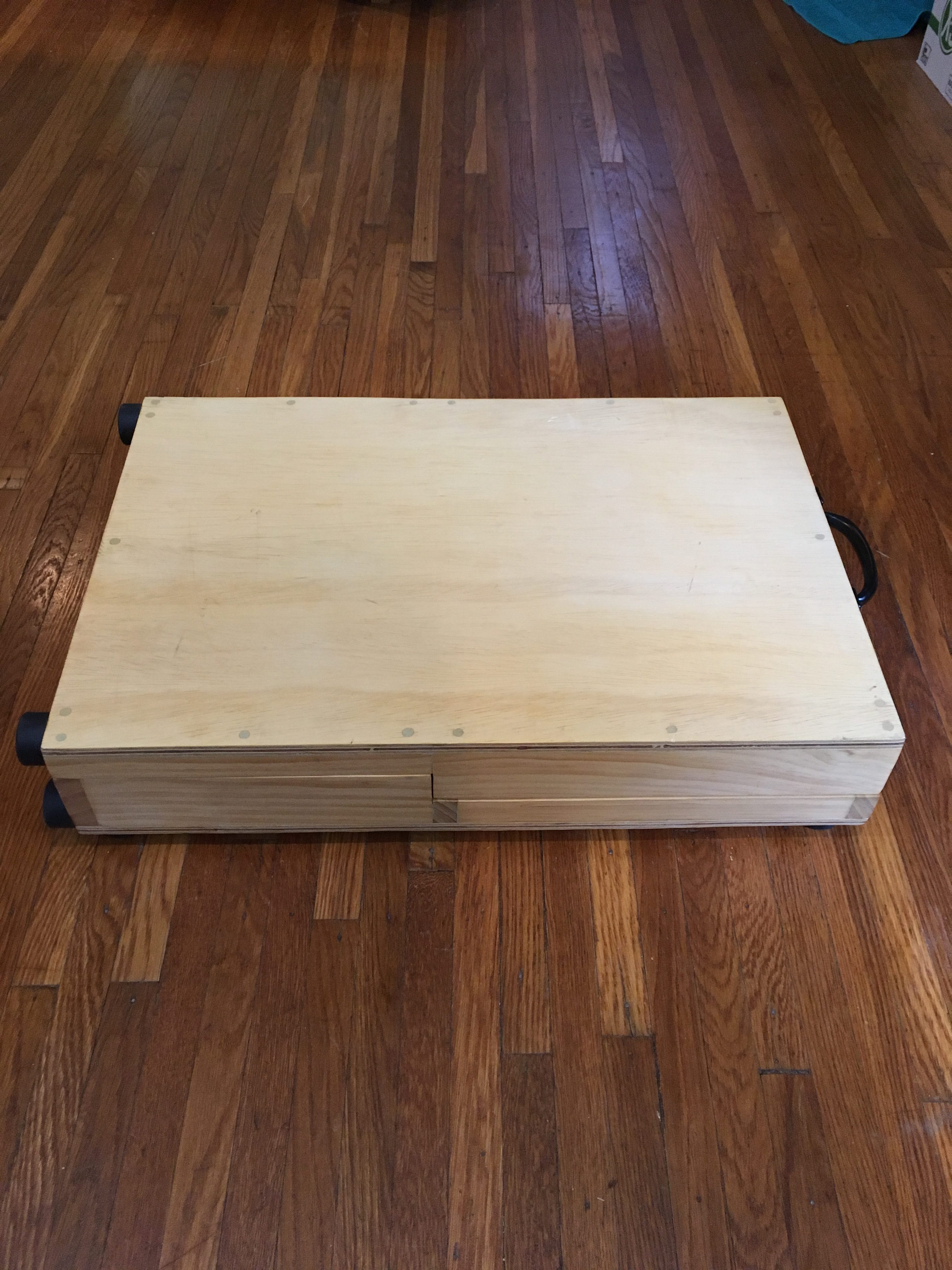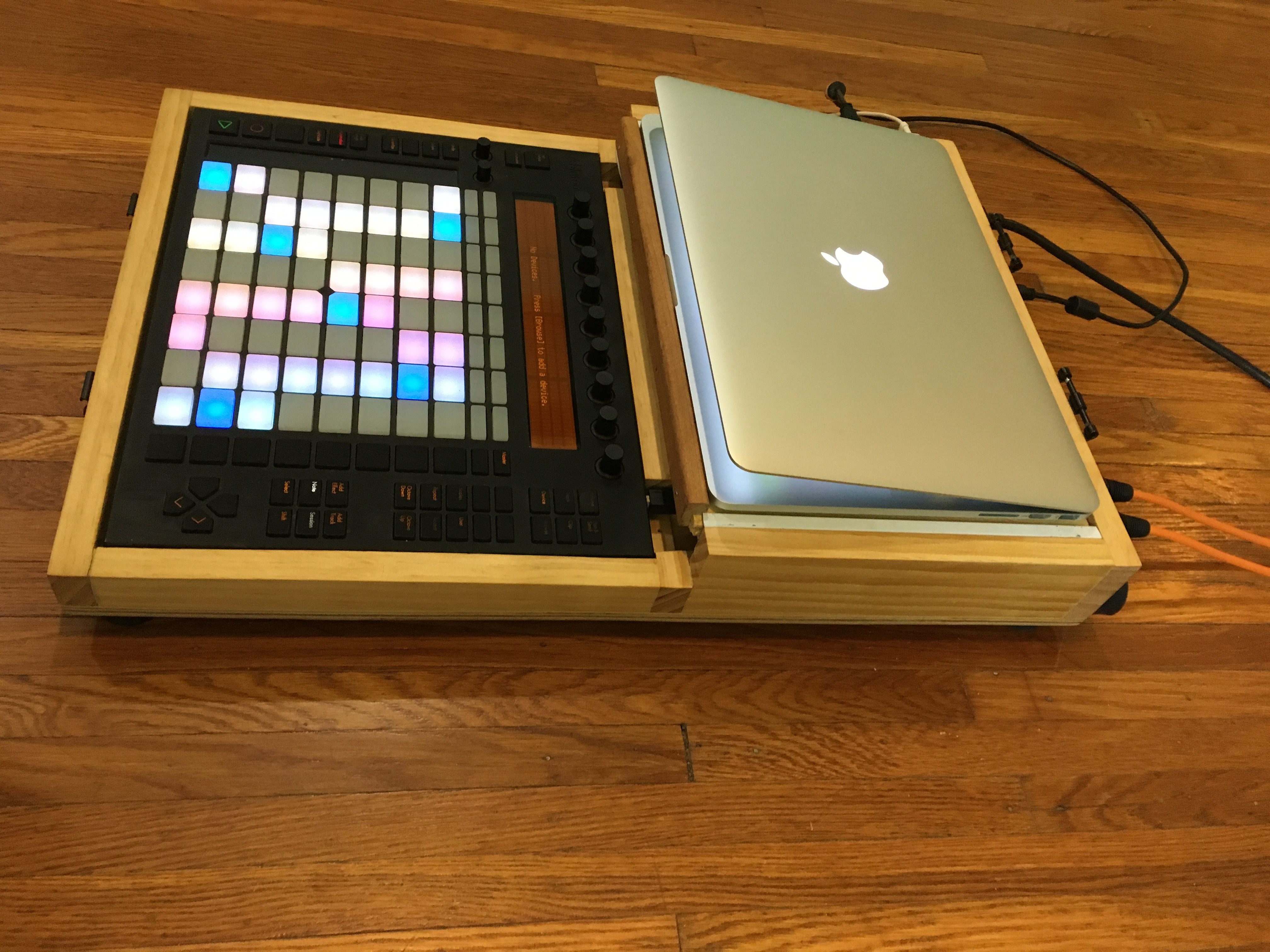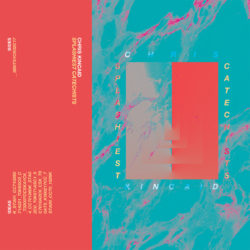I love to tinker and I probably spend as much time thinking about interfacing with and transporting gear as I do practicing on said gear. Because of that I’m always building new cases for whatever setup I’m performing with.
Years ago it started with a 24U – 19″ rack on casters with a bunch of extra crap on top that my band mates lovingly dubbed, “the go-bot” because of how tall it was and how it resembled a corny 1960s robot. It included a full desktop running reason, a touch screen monitor (the old shitty ones that didn’t really work very well) rack mount delay, 2 tube heads, a Hohner pianet-t, and an 88 key midi controller. It was overkill but 22-year old me was dumb and fine with lugging it to shows. It weighed about 120 pounds.

The next iteration was dubbed by the same band mates as, “the child coffin” due to it’s dimensions (roughly 4’x2’x1.5′) and because it took at least 2 people to carry it anywhere. It had the 88 key controller, a duo core white macbook, a rack mount tube amp, and a couple of those korg nano controllers mapped to Ableton. It weighed about 60 pounds. Unfortunately I can’t find a picture of this one.
After years of playing with heavy gear I began obsessing about a light setup. I found an old bass guitar case, replaced the hinges with the breakaway kind, and filled it with smaller midi controllers, an audio interface, and a laptop. This was the first setup I could load in by myself and I loved it! At the same time I went off the deep end with Ableton macros and dummy clips (and my label maker apparently.) 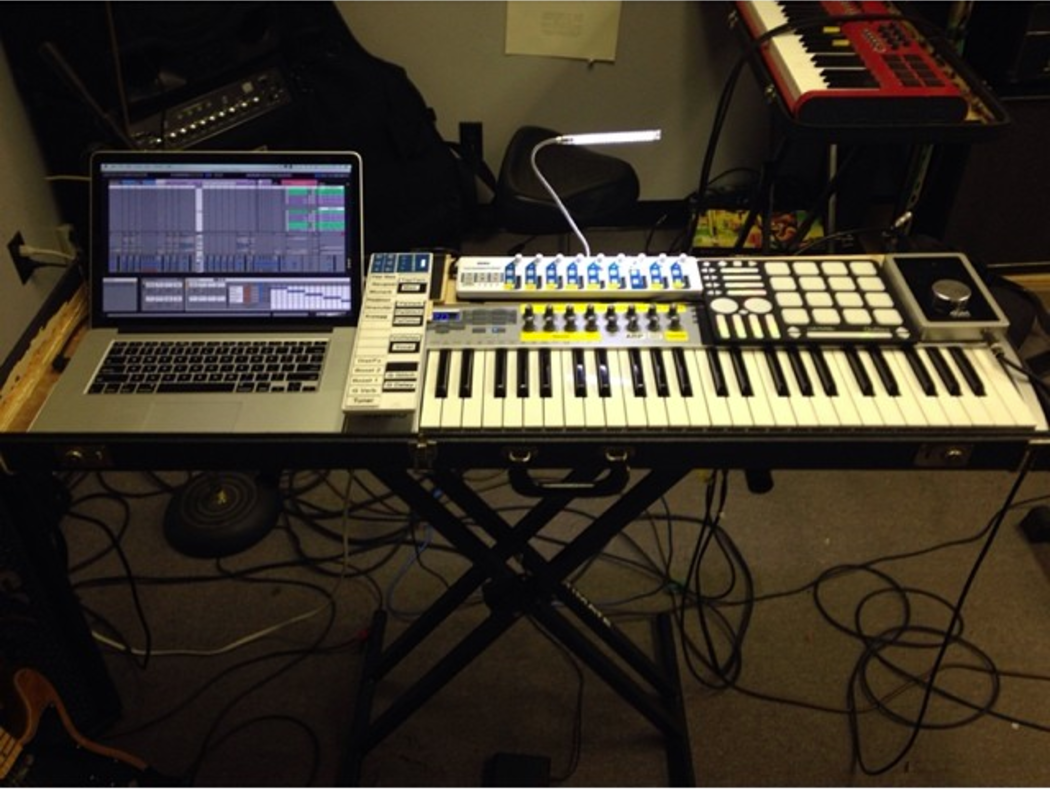
Then came the Ableton Push controller. I was smitten with this thing because of how well they seemed to streamline everything into 9 knobs and a bunch of buttons. Below is the first iteration of my live setup with Push. It was all housed in a cheap but giant guitar foot pedal case. I had a usb hub connected to the Push, the audio interface, a usb foot pedal, a midi out to send clock to the guy beside me, and a DMX device that sent data to leds from the Ableton Live set. This case worked alright but there was too much space in the top of the case so things would float around inside the case during transport. 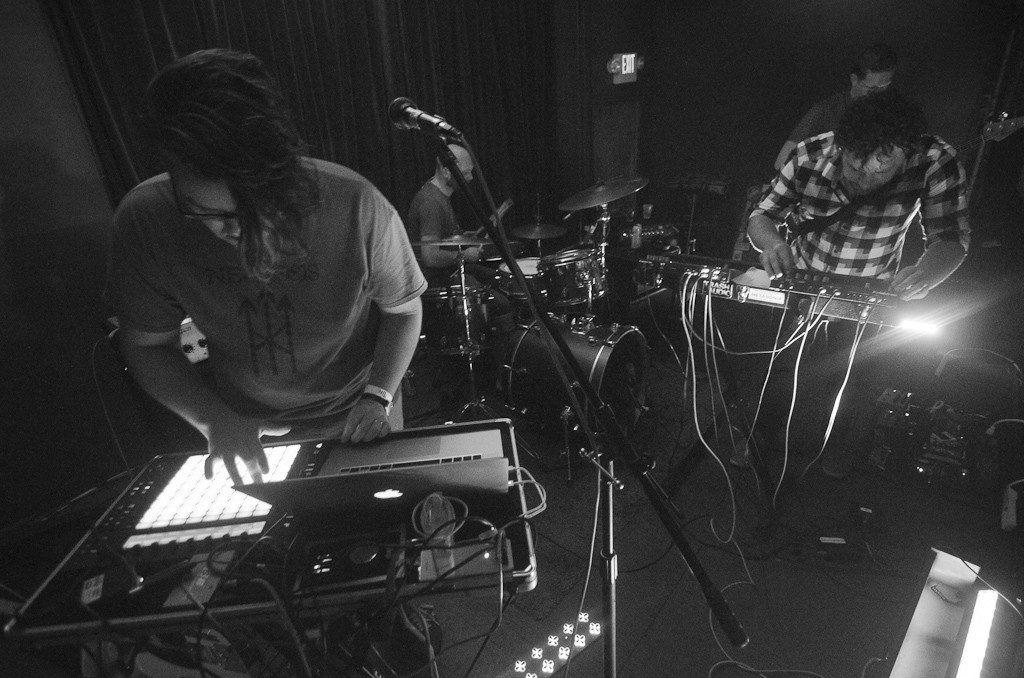
I thought about the most recent iteration for about a year before building it. I wanted the form factor of the last one with even less space for things to move. I wanted something that I could take the top off, plug in, and start playing. This is what I came up with: 
It’s about as streamlined as possible since it is purpose built for the Push and my laptop. I used big box “furniture quality pine” that was fairly straight and sturdy enough. I wanted this case to protect my laptop, a device I use for 100% of all the work I do for money. I couldn’t risk it being damaged at a show. This case delivers on that part too. I could probably stand on it when the lid is on and my laptop would be as happy as a clam protected under 3/4″ of wood. Underneath the laptop is a pull out shelf hiding the audio interface, power, usb hub, and DI box to send balanced signals to the house PA.

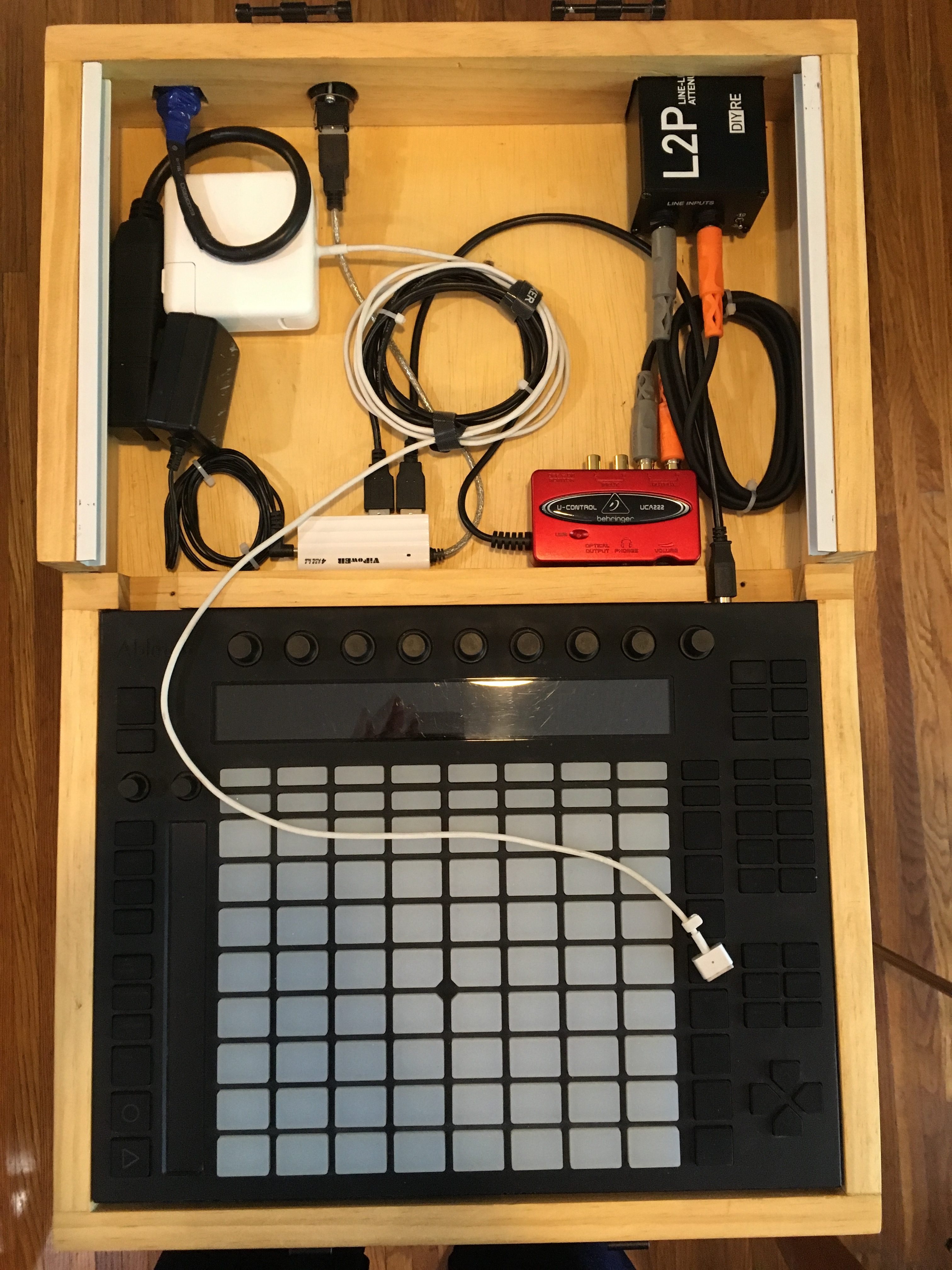
A closer look at the somewhat tidy wiring.

I had some scrap wall shelf mounts (the white metal strips) that worked perfectly for a drawer slider.

I hardwired the power cord to an IEC jack on the back and cut out holes for a usb port and the DI. This way when I’m playing a show and when I have to break down for the next band/artist it takes almost no time to disconnect everything and set it off stage. 
I’m pretty happy with this new case but I can tell I’m already wanting to get the newer Push 2. My day job is teaching applied music technology at a university and I feel like I should be familiar with everything the current controller offers. Also it will give me an opportunity to make another one of these cases and this time teach myself to make box joints and mortices so I can do it without having to fill in any screw holes with wood filler! 🙂 On to the next case!




